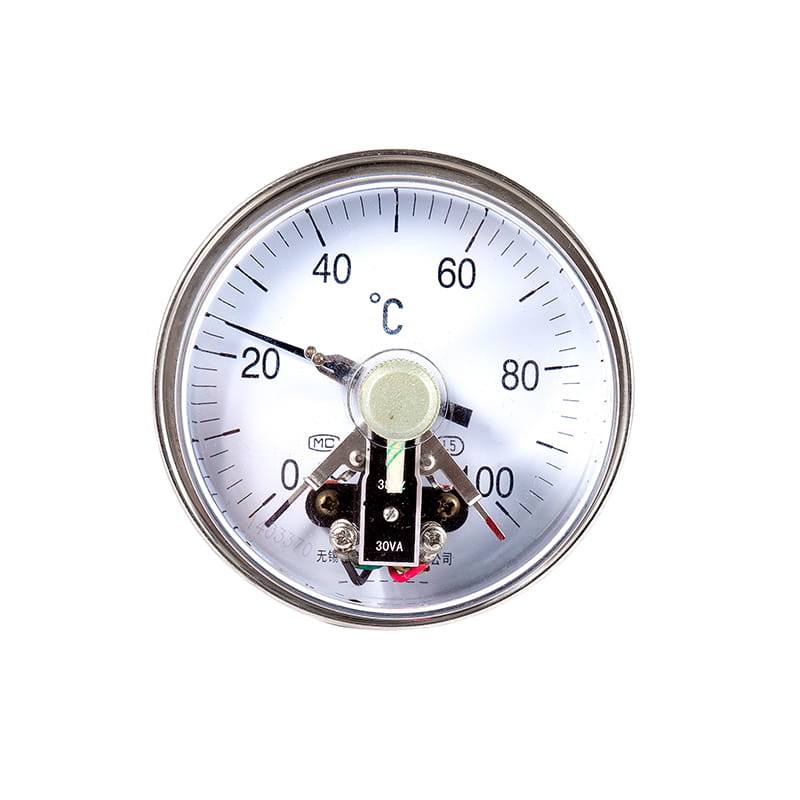Temperature measurement is a critical aspect of countless industrial processes—from monitoring heat in HVAC systems to ensuring precision in manufacturing plants. While advanced digital sensors and infrared devices have emerged in recent decades, bimetallic thermometers continue to hold their place as a trusted, cost-effective, and robust solution for many applications.
In this article, we’ll explore how bimetallic thermometers work, their key features, common applications, and how they compare to other temperature measurement devices.
What Is a Bimetallic Thermometer?
A bimetallic thermometer is a mechanical device that measures temperature through the expansion and contraction of two different metals bonded together. These metals have different coefficients of thermal expansion, meaning they expand at different rates when exposed to heat.
The bimetal strip is usually wound into a coil or helix. As temperature changes, the metals expand or contract unevenly, causing the coil to twist or bend. This mechanical movement is transferred to a pointer on a dial, giving a direct temperature reading without requiring any electrical power.
How Do Bimetallic Thermometers Work?
- Sensing Element – A bimetal strip (made from two metals, such as steel and brass) reacts to temperature changes.
- Mechanical Movement – The different expansion rates cause the strip to bend or twist.
- Pointer Mechanism – The movement is transmitted through a spindle to a pointer, which sweeps across a calibrated dial.
- Direct Reading – The dial displays the current temperature in °C, °F, or both.
This simple yet effective design makes bimetallic thermometers rugged, reliable, and maintenance-free for many years of operation.

Key Features of Bimetallic Thermometers
- No Power Source Needed – Operates purely mechanically, ideal for remote or hazardous locations.
- Durable Construction – Resistant to shock, vibration, and harsh environmental conditions.
- Wide Temperature Range – Typically from -50°C to +500°C depending on design.
- Easy to Read – Large dial faces provide clear readings, even in low-light environments.
- Low Maintenance – With no electronics, these thermometers require minimal upkeep.
- Customizable – Available in different stem lengths, dial sizes, and mounting options.
Common Applications of Bimetallic Thermometers
- HVAC Systems – Monitoring air and fluid temperatures.
- Food Processing – Ensuring cooking and storage temperatures remain within safety limits.
- Oil & Gas Industry – Measuring process temperatures in pipelines and tanks.
- Chemical Processing – Monitoring reactors, distillation columns, and storage vessels.
- Power Plants – Tracking boiler and turbine temperatures.
- Pharmaceutical Manufacturing – Ensuring precise process control.
Comparison Table: Bimetallic Thermometers vs. Other Thermometers
| Feature / Property |
Bimetallic Thermometer |
Mercury-in-Glass Thermometer |
Digital Thermometer |
| Power Requirement |
None |
None |
Requires Battery/Power |
| Temperature Range |
-50°C to +500°C |
-39°C to +356°C |
-200°C to +1370°C (sensor dependent) |
| Durability |
High |
Fragile (glass) |
Moderate to High |
| Accuracy |
±1% to ±2% of scale |
±0.5% to ±1% of scale |
±0.1°C to ±0.5°C |
| Response Time |
Medium |
Medium |
Fast |
| Maintenance |
Low |
Low |
Medium (sensor calibration) |
| Cost |
Low to Medium |
Low |
Medium to High |
| Hazard Risk |
None |
Mercury toxicity |
Minimal |
Advantages of Using Bimetallic Thermometers
- Long Service Life – Robust design ensures years of dependable service.
- Cost-Effective – Lower initial and operating costs compared to electronic systems.
- Safety – No mercury or hazardous materials.
- Versatility – Suitable for gases, liquids, and solids in both industrial and commercial settings.
- Field-Proven Reliability – Decades of use across multiple industries confirm their effectiveness.
Limitations to Consider
While bimetallic thermometers offer many benefits, they also have some limitations:
- Slower Response Time – Not ideal for applications requiring instant readings.
- Limited Extreme Accuracy – Not as precise as high-end digital thermometers for laboratory use.
- Calibration Drift – Over time, mechanical wear may cause small deviations, requiring recalibration.
Installation and Maintenance Tips
- Proper Immersion Depth – Ensure the sensing stem is fully immersed in the medium for accurate readings.
- Avoid Excessive Vibration – While durable, constant high vibration can reduce accuracy.
- Periodic Calibration Check – Helps maintain accuracy over time.
- Choose Correct Mounting – Available in back connection, bottom connection, and adjustable angle designs.
Conclusion
Bimetallic thermometers remain one of the most reliable, low-maintenance, and cost-effective temperature measurement devices available today. Their mechanical simplicity, rugged durability, and no-power operation make them indispensable in industries where reliability matters more than ultra-fast digital readings.
